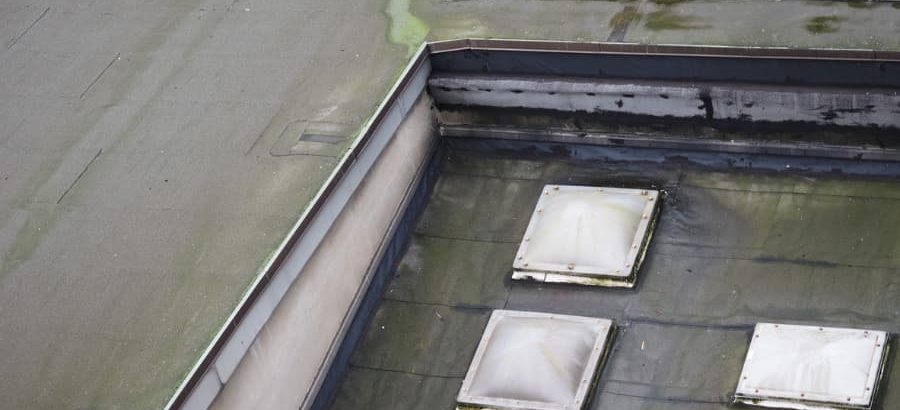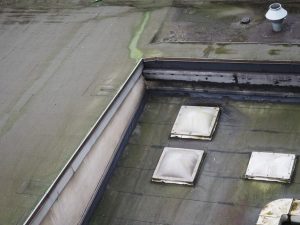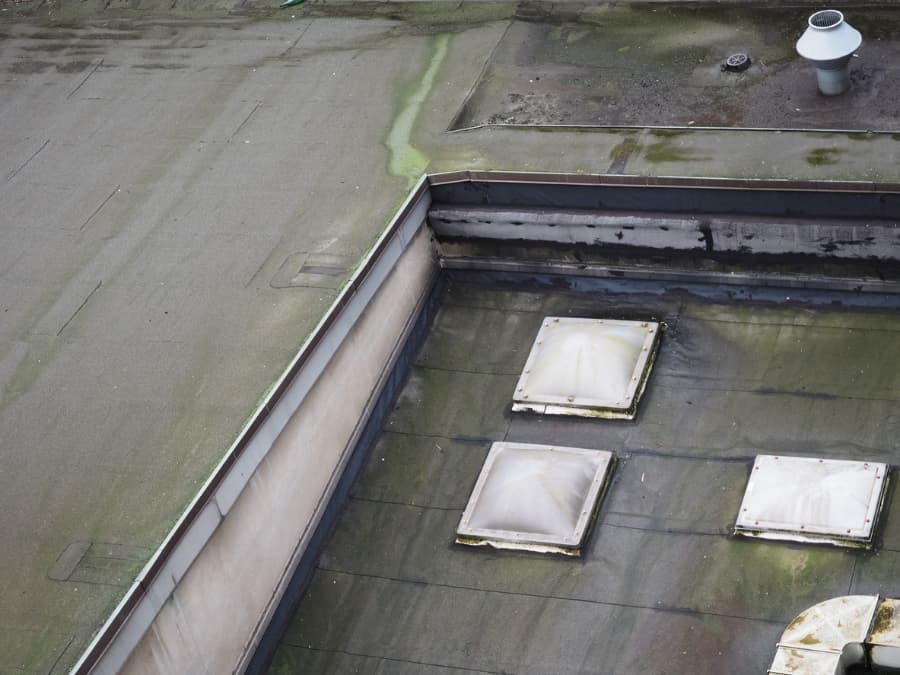


You might worry about wind and the elements damaging your roof, but there’s another natural enemy every commercial property owner should be aware of: mold. Because it can appear overnight and spread just as quickly, you must act immediately if mold is detected. To help protect your property, McDonald & Wetle explains common signs of mold on commercial roofs, as well as how to eliminate and prevent it.
How to Identify Mold
A type of fungus, mold can grow just about anywhere it finds the right conditions. With a surface to feed on, the right temperature, and enough moisture, mold spores will quickly spread. That means a small patch of mold could explode into a much larger problem within days.
Mold is usually easy to identify by its patchy, fuzzy appearance. It comes in many colors, most commonly green, gray, brown, or black. However, there are reasons to suspect mold even when you can’t see it. These include:
- An unpleasant, musty smell
- Water stains and discoloration on ceilings
- Crumbling drywall or plaster
- Peeling paint
Drafts can also indicate the presence of mold. Any space that allows air inside can provide access for water, fueling mold growth before you notice other indicators.
In some cases, what you assume to be mold could be algae. This dark-colored slime is unattractive, but will not cause damage as mold does. Still, you’ll want to remove it anyway, as it can create a slipping hazard on flat roofs and diminishes your property’s appearance.
How to Remove Mold on Commercial Roofs
If you notice signs of mold, don’t wait to act. Even a small amount can eventually lead to rot and move indoors via HVAC ductwork. Once it does, spores can grow on wood, upholstered surfaces, and carpets, and building occupants can face health risks ranging from mild irritation to dangerous allergic reactions.
Fortunately, removing mold doesn’t have to be difficult. An experienced contractor can clean your roof using chemicals that are safe for roofing materials but strong enough to kill spores. They will remove debris, standing water, and any existing mold and provide additional treatments if needed to prevent its return. At the same time, repairing leaks will help keep water out of the roof’s materials and prevent future infestations that might be difficult to spot.
Preventing Mold on Commercial Roofs
The best way to prevent mold damage is to stop its growth in the first place. That’s why it’s so important to partner with a roofing contractor who understands the unique demands of flat commercial roofs. At McDonald & Wetle, we help clients avoid mold growth in several ways, including:
- Waterproofing. With the installation of a waterproof membrane, your roof achieves an added layer of defense against moisture.
- Upgrade drainage. Standing water accumulates easily on many commercial roofs. With proper drainage, water runs off the roof and starves mold of the moisture it requires to grow.
- Proper maintenance. Consistent inspections can identify mold early and ensure repairs are completed before leaks form. Keeping the roof free from debris minimizes the presence of organic material, while regularly cleaning drains reduces the risk of clogs and pooling water. Periodic deep cleaning can also thwart mold before it spreads.
Eliminate Mold on Commercial Roofs
The Pacific Northwest climate creates optimal conditions for mold, and Seattle, WA, and Portland, OR metro area property owners should check their roofs regularly to help prevent its growth. If you’ve noticed signs of mold, contact McDonald & Wetle today. We’ll perform a deep cleaning, update drainage, and help ensure your roof remains in good condition for years to come.

